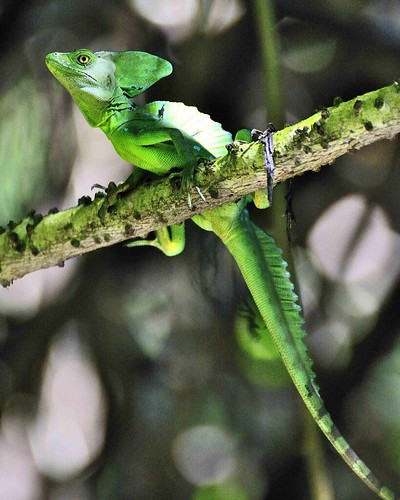




I've never posted about snakes, so I thought why not. This S. American boa is relatively common, but I think demonstrates the structure of a snake well. If you can get over your fear of them, it's a pretty elegant animal. They are distinctive for their positioning -- they rest on branches in the form seen in picture 2, and at night sit on low branches so it can attack small mammals by just reaching down and grabbing with its teeth. For a venomous snake, it has the largest proportioned teeth.
Depending on where in the continent they are, they have different features -- sometimes slightly different designs, different lengths (the longest are around 6 ft.) and slightly different colors. The last picture is actually of a juvenile -- they're born red and slowly turn green as it matures. Why? Perhaps because red is a color that predators avoid -- and as a baby, perhaps they are less coordinated and can be easily spotted, so this might keep others away. When older, it can move smoother and can easily blend in, thus having camouflage rather than warning signs. It's easier for hunting.
The juveniles eat glass frogs primarily, and for some reason change their diet to largely mammals later. Adults eat very rarely. Since their digestive system is so slow, it can be months between one meal and the next.
The last thing about that stands out is their reproductive system, which is actually similar to whale sharks. They are ovoviviparous, meaning the eggs are within the body and are hatched before leaving the mother's body, leaving as a live birth. This is unusual for a snake -- perhaps a development that came as the snake lived almost exclusively in trees -- the eggs are mobile this way and aren't easily crushed from a fall.













